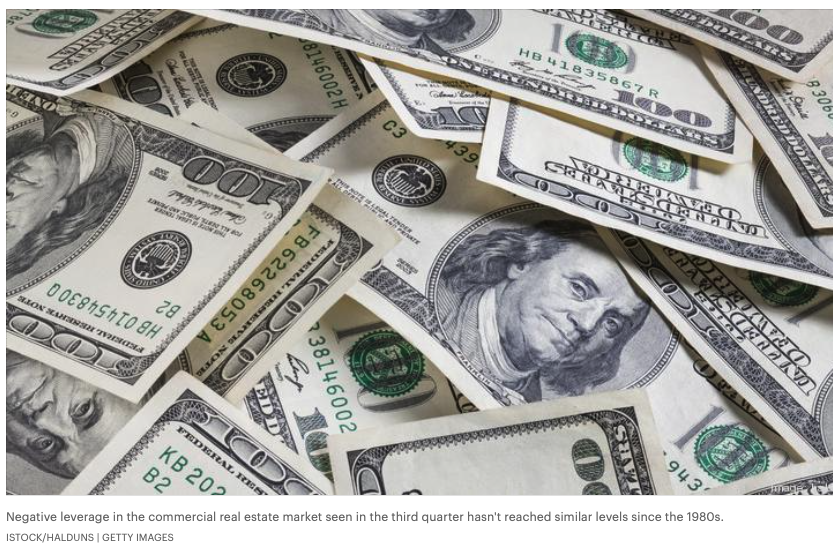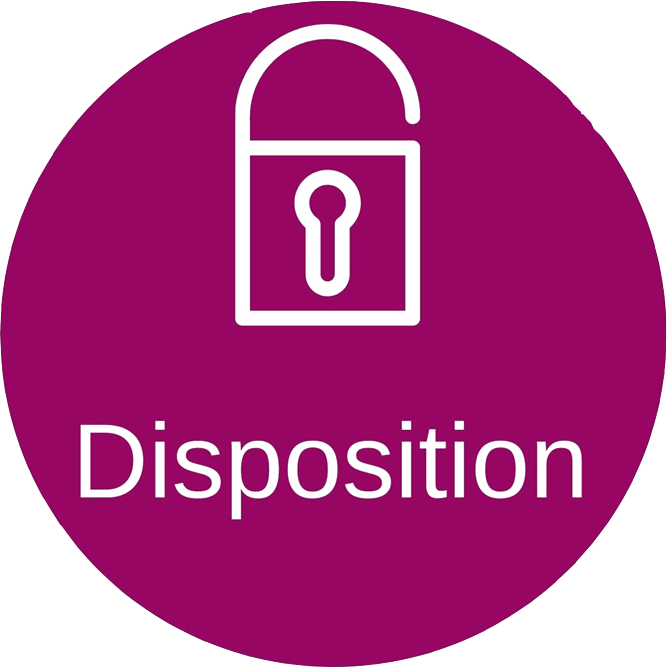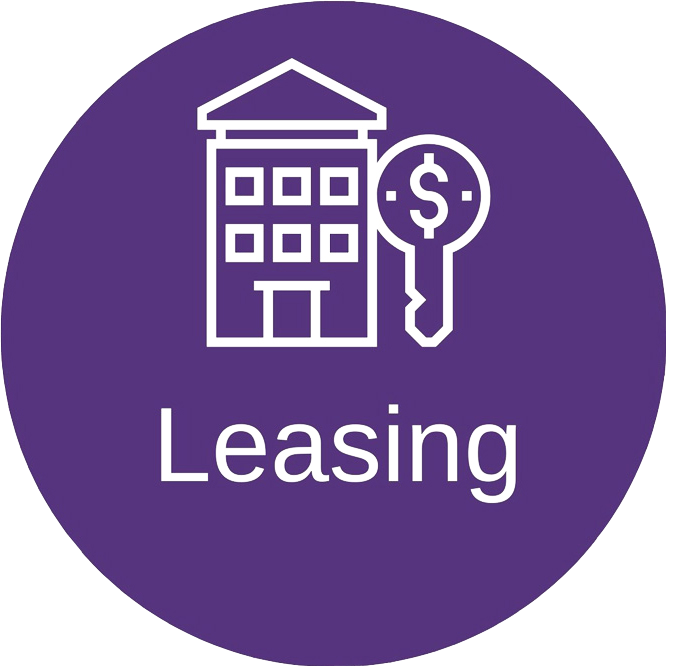
Q3 spike in loans with negative leverage signals how commercial real estate dealmaking is changing
Q3 spike in loans with negative leverage signals how commercial real estate dealmaking is changing
Negative leverage in the commercial real estate market seen in the third quarter hasn’t reached similar levels since the 1980s.
That’s according to an analysis by New York-based Moody’s Analytics Inc., which found the share of commercial mortgage-backed securities loans with negative leverage hit 30.3% in Q3 by count and 27.6% by loan balance.
Negative leverage occurs when debt costs in a real estate deal are greater than the property’s cash-on-cash return. The uptick in negative leverage observed last quarter can be attributed to how quickly interest rates rose in that three-month period, on the back of often record-setting prices paid, especially for apartments and warehouses.
Kevin Fagan, head of commercial real estate analysis at Moody’s, said it wasn’t necessarily surprising to see more negative leverage in Q3 but the dramatic spike in one quarter perhaps was. The share and balance of loans with negative leverage was less than 10% in Q2 and less than 5% in Q1.
Fagan said buyers have, until recently, been making aggressive assumptions about returns, and some were operating under a thesis that significant interest-rate hikes would be temporary. It’s proven to be a prolonged effort to cool down the economy, and the Federal Reserve issued another 75 basis-point interest-rate hike at its meeting today.
Still, he said, there are a number of forces at play that suggest Q3 may represent the peak for negative leverage in the current cycle.
“The data lags but the ear-to-the-ground noise is that (capitalization) rates are going to go up,” Fagan continued. “Lending is starting to pull back pretty substantially. Large banks are running into stress-testing requirements for their risk-based capital, which is restricting them from doing certain kinds of deals.”
And, earlier this year, the Federal Deposit Insurance Corp. signaled it would exercise greater scrutiny over banks with significant exposure to commercial real estate loans. The volume of commercial real estate loans held by banks peaked at more than $2.7 trillion at the end of 2021, according to an August report by the FDIC.
Because of the pullback by large financial institutions and within the securitized market, buyers are running into issues on the financing side, causing a slowdown in deal volume nationally.
Moody’s found multifamily and industrial as the property types facing the most negative leverage in its Q3 analysis.
Industrial and multifamily have the largest share by count, at 35.9% and 30.8%, respectively, according to Moody’s. Consistently, multifamily and industrial have been the top-performing and most favored asset classes since the Covid-19 pandemic. According to Moody’s, it’s possible borrowers for those properties are more willing to accept an interest rate that deteriorates their levered internal rate of return because they’re expecting higher revenue or value growth.
Still, Fagan said, those properties are pricing in such a way that they don’t have much wiggle room in their exit strategies.
“Those asset classes are priced so tightly that they don’t have anywhere to go but down in value,” he said. “Values do correct — it doesn’t mean it’s a cataclysm for those assets.”
Owners may wind up holding on to properties longer than originally anticipated as a result.
CBRE Group Inc. (NYSE: CBRE) recently found cap rates for multifamily properties have increased from record-low levels observed in Q1 2022, reaching 4.09% in Q3, still slightly below the 4.16% rate seen in Q4 2019. Investors surveyed by the company are underwriting 3.6% annual rent growth for the next three years, a downgrade from the 4.3% forecast in Q1 but still higher than the 3.1% average seen between 2014-2019, according to CBRE.




